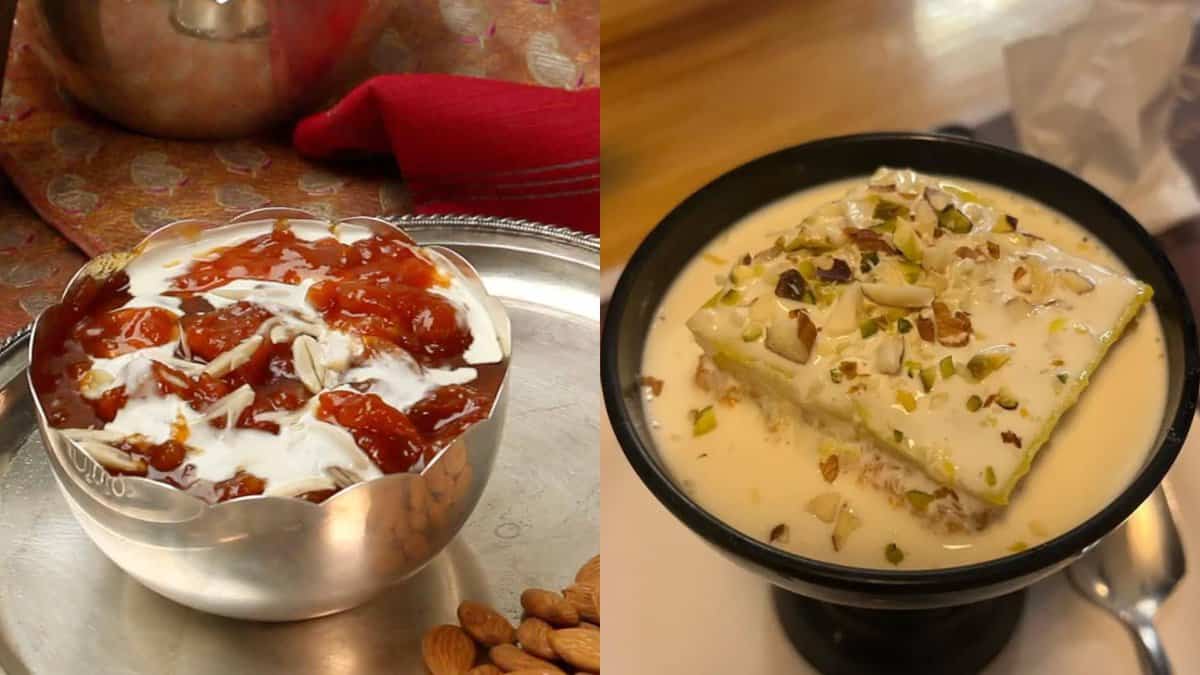
Long before Kunafa chocolate, cheesecakes, and macarons found their way to Hyderabad’s dessert menu, there was Qubani ka meetha, a regal delight that has stood the test of time. Rooted in the royal kitchens of the Nizams, this slow-cooked dessert made from dried apricots continues to hold a special place in the hearts of Hyderabadis’ (and wedding menus).
More than just a sweet dish, it is a cultural heirloom passed down through generations and is often the final piece of a traditional Hyderabadi meal. Served with either malai, vanilla ice cream or custard, it is a dessert that is simple yet rich, a nod to the people and culture of Hyderabad.
In this article, Siasat.com will map the fascinating journey of Qubani ka Meetha from Central Asia to its present-day version on our tables.
From Central Asia to the Deccan
The journey of Qubani ka Meetha is as layered as the dessert itself and it begins long before the Nizams of Hyderabad. Apricots, or qubani, are believed to have been imported into the Indian subcontinent by Central Asians. But their global journey began much earlier. Historians speculate that apricots travelled westward from China to Europe via India as early as the 4th century BCE, possibly carried by the entourage of Alexander the Great.
Centuries later, qubani found an admirer in Babur, the founder of the Mughal Empire, who longed for the fruits of his native Fergana Valley in Uzbekistan (Central Asia) while enduring the heat of the Indian plains. Ironically, the prune that he missed so dearly had likely once passed through India because of Alexander. With the establishment of the Mughal Empire, dried apricots became integrated into royal Indian cuisine.
However, over time North India didn’t really adopt this delicacy but the Asaf Jahi Dynasty in Hyderabad embraced it wholeheartedly. It was here that Qubani ka Meetha evolved into its present form: dried apricots soaked overnight, slow-cooked with sugar to a luscious compote, and garnished with blanched almonds or apricot kernels. This dessert became a hallmark of Hyderabadi hospitality, gracing the tables festivals and weddings.
Modern version of Qubani ka meetha
Qubani ka meetha is enjoying a quiet renaissance in Hyderabad in the form of Apricot delight. While this version retains the essence of the dessert, it also introduces layers of cake, custard and whipped cream, creating a trifle-like treat.
Some credit this modern twist to The Spicy Venue in Banjara Hills. The dessert was created by L Ravinder Kumar in 2001 in response to requests for a new and different dessert option. The popularity of apricot delight has also been amplified by social media influencers and food bloggers. While some traditionalists argue that Apricot Delight is a distraction from the original Qubani ka Meetha, many appreciate this version as a way to keep the dessert relevant in today’s diverse culinary landscape.
Whether you enjoy it the traditional way or as a chilled Apricot delight, one thing is for sure, every bite is laden with history and heritage.


